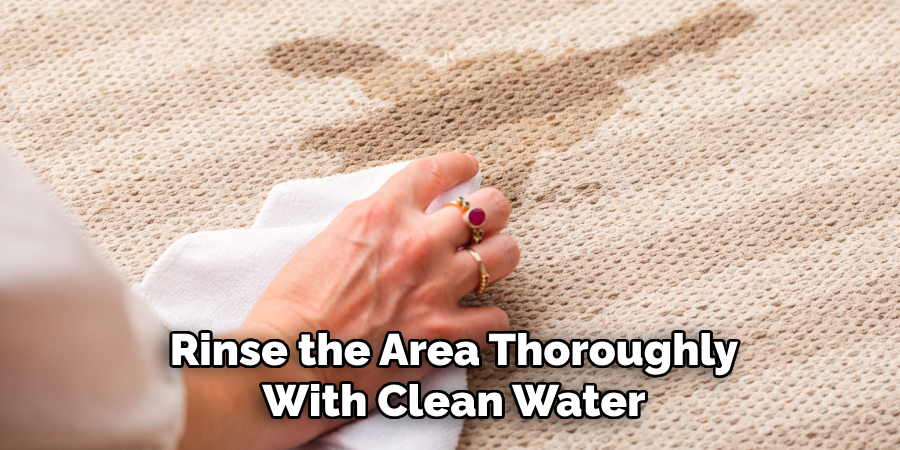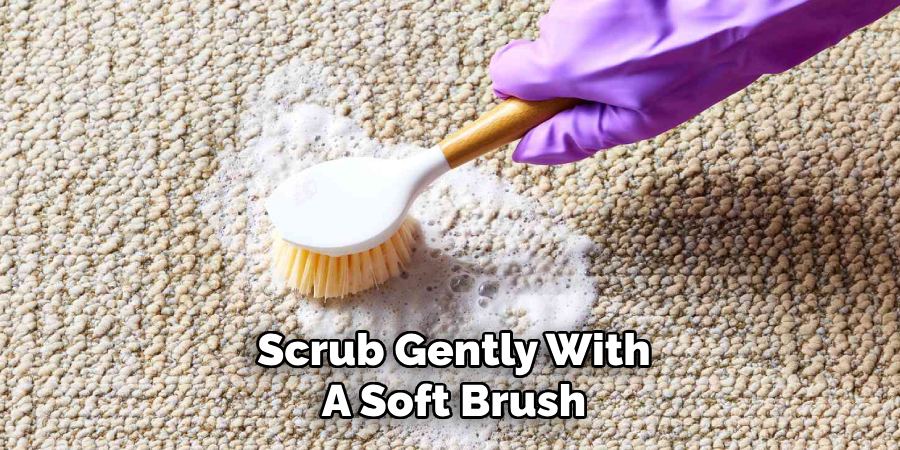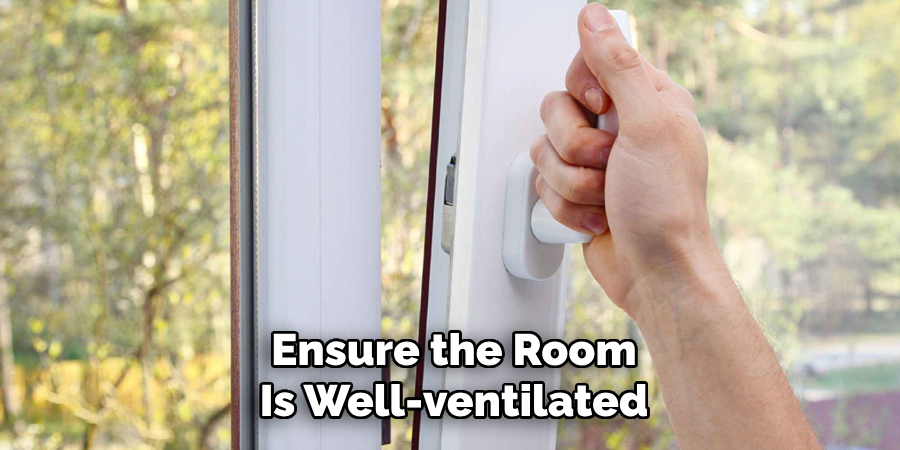Removing dry paint from a carpet can seem like a daunting task, but with the right approach and a few home remedies, it is often possible to restore your carpet to its original condition. Whether it’s a small accidental spill or a larger area affected by a home improvement project, tackling the issue promptly and using the correct techniques can make all the difference. This guide will explore some simple and effective methods for how to remove dry paint from carpet home remedies.

Importance of Using Safe, Homemade Remedies
Using safe, homemade remedies to tackle dry paint stains on your carpet is not only cost-effective but also minimizes the exposure to harsh chemicals often found in commercial cleaning products. Harsh chemicals can sometimes damage the fibers of your carpet or leave behind strong, unpleasant odors. Homemade solutions such as a mixture of dish soap, vinegar, and warm water are gentler alternatives that effectively break down the paint without causing harm to the carpet or the environment.
Additionally, these remedies are often made with items you already have at home, making them a convenient and eco-friendly option for maintaining the longevity and appearance of your carpets.
Identify the Type of Paint
Before attempting to remove paint from your carpet, it is crucial to identify the type of paint involved. Common paint types include water-based paints, such as acrylic and latex, and oil-based paints. Water-based paints are generally easier to remove and respond well to soap and water or a gentle cleaning solution.
On the other hand, oil-based paints may require stronger solvents or specialized cleaning products due to their tougher, more adhesive properties. Understanding the type of paint will help you choose the most effective and safe cleaning method for your carpet.
Materials You’ll Need
To effectively remove paint from your carpet, gather the following materials:
- Clean white cloths or paper towels
- A dull knife or spoon for scraping
- Soap or dish detergent
- Warm water
- Cleaning solution suitable for the paint type (such as rubbing alcohol or paint thinner)
- Soft-bristled brush
- Vacuum cleaner
- Protective gloves (optional)
Having these materials on hand will ensure you’re prepared to tackle the stain efficiently and safely.
10 Methods How to Remove Dry Paint from Carpet Home Remedies
1. Loosen the Paint with Warm Water and Dish Soap
Start with the gentlest method: combining warm water and mild dish soap. Mix one tablespoon of liquid dish soap with two cups of warm water. Use a sponge or clean cloth to moisten the dried paint spot generously, allowing the mixture to soak in for several minutes.

This will help soften the hardened paint, making it easier to lift. Gently blot and scrape at the edges of the paint with a dull knife or the back of a spoon, repeating the soaking process as needed. This method works best for water-based or latex paint and won’t harm the carpet fibers.
2. Scrape Carefully with a Dull Knife or Spoon
Before applying any liquid treatments, physically remove as much of the dried paint as possible. Use a butter knife, a plastic putty knife, or the back of a spoon to gently scrape away flakes and chunks. Be patient and take care not to tug at the carpet strands or damage the backing. Breaking up the paint into small, manageable sections makes subsequent cleaning methods more effective. If the paint is thick, score it lightly with a utility blade to help cleaning solutions penetrate deeper in later steps.
3. Use Vinegar to Break Down the Paint
White vinegar is a powerful and natural solvent that can help dissolve dried paint without harsh chemicals. Heat one cup of white vinegar until it’s warm (but not boiling), then pour or dab it directly onto the paint stain using a sponge or towel.
Allow it to sit for 10–15 minutes, softening the dried paint. After soaking, blot the area and gently scrub with a soft-bristled brush. Vinegar is particularly useful on water-based paints and is safe for most carpet types, though a spot test is wise for colored or delicate materials.
4. Try Rubbing Alcohol for Stubborn Paint Marks
For more stubborn dried paint stains, isopropyl (rubbing) alcohol is an effective home remedy. Pour a small amount onto a clean cloth and press it onto the paint stain for a few minutes. Alcohol works by breaking down the paint’s bond with the carpet fibers. Once the area is damp, blot and gently rub in a circular motion to lift the loosened paint. Rinse the area with warm water afterward to remove any residue. Avoid over-saturating the carpet, and never mix alcohol with bleach or other cleaners.
5. Apply Nail Polish Remover with Acetone (With Caution)
Acetone, commonly found in nail polish remover, is effective at dissolving oil-based and acrylic paints. However, it can discolor some carpets, especially those made with synthetic fibers. Test it on a hidden area first. If safe, dab a small amount onto a cloth and gently apply it to the dried paint. Let it sit briefly, then scrape with a dull blade and blot. Work in small increments and avoid overspreading. After removing the paint, rinse the area thoroughly with clean water to neutralize any remaining solvent.

6. Use a DIY Baking Soda Paste
For a more abrasive but natural approach, mix baking soda with a small amount of water to create a thick paste. Apply this paste to the dried paint spot and allow it to sit for 10–15 minutes. The baking soda will help break down the paint and loosen its grip on the carpet fibers. After soaking, scrub gently with a toothbrush or soft scrub pad, and then blot with a damp cloth. Baking soda not only helps with stain removal but also neutralizes any lingering odor from cleaning agents or the paint itself.
7. Use a Steamer to Rehydrate and Soften Paint
If you have access to a handheld garment steamer or steam cleaner, use it to apply warm steam directly onto the dried paint. The heat and moisture will rehydrate the hardened paint, softening it for easier removal. After steaming, blot the area and scrape up the softened paint. Follow up with a soapy water rinse or your chosen cleaning agent. Steaming is especially helpful for large paint spills or thick globs that are too hard to remove by scraping alone.
8. Combine Vinegar and Baking Soda for Double Power
For particularly stubborn patches, combining vinegar and baking soda creates a fizzing reaction that can lift dried paint particles. First, sprinkle baking soda directly onto the paint-stained carpet. Then spray warm vinegar over the powder. The chemical reaction helps to break down the paint residue. After the fizzing stops, scrub gently with a soft brush and blot with a clean towel. This method is not only effective but completely non-toxic and safe for households with pets or children.

9. Use Cornstarch to Soak Up Paint Oils
Cornstarch is a lesser-known but useful remedy, particularly when trying to extract any remaining oily residue from paint. Sprinkle a generous amount over the dried paint and leave it for several hours—overnight if possible. The cornstarch absorbs moisture and oils that may remain embedded in the carpet fibers. Once it has sat long enough, vacuum up the powder and inspect the spot. If any stain remains, follow up with one of the wet methods, like dish soap or rubbing alcohol, for final cleanup.
10. Finish with a Cold Water Rinse and Dry Thoroughly
After you’ve successfully removed the dry paint using any of the above methods, it’s essential to rinse the area with cold water. This removes any remaining cleaner, vinegar, or paint residue that might attract dirt or cause discoloration over time. Blot the area with a dry towel to absorb excess water. Then, use a fan or open window to air-dry the carpet completely. Avoid walking on the spot until it’s fully dry, and consider a final vacuum pass to restore the carpet’s texture and remove any loosened debris.
Things to Consider When Removing Paint from Carpet
- Type of Paint: Identifying whether the paint is water-based or oil-based is crucial, as each type requires different cleaning methods. Always check the label of the paint product for guidance.
- Act Quickly: The sooner you address the spill, the easier it will be to remove. Wet paint is far simpler to clean compared to dry and hardened paint.
- Test Cleaning Solutions: Before applying any cleaning agents or home remedies, perform a patch test on a small, inconspicuous area of the carpet. This can prevent unexpected damage or discoloration.
- Avoid Excess Moisture: When cleaning, be mindful of how much liquid you use. Oversaturating the carpet can lead to water damage or mold growth.
- Use Gentle Pressure: Scrubbing too aggressively may damage carpet fibers, resulting in permanent wear or distortion. Always blot gently instead of rubbing.
- Ventilation: Ensure the room is well-ventilated while cleaning, especially if you’re using strong chemicals like paint removers or solvents. Proper airflow helps reduce fumes and speeds up drying.

Taking these factors into account will help ensure a successful and safe process when dealing with paint spills on your carpet.
Conclusion
Dry paint in carpet can feel like a permanent disaster, but with the right home remedies and a bit of patience, you can often restore your carpet to its original condition. From gentle soapy water to more aggressive yet safe options like vinegar, baking soda, and rubbing alcohol, these household ingredients provide a budget-friendly and non-toxic way to tackle the problem.
The key is to use methods that match your carpet type and paint composition, working carefully to avoid damaging the fibers. With the right approach, even stubborn dried paint doesn’t stand a chance
About
Jennifer Branett is a distinguished figure in the world of Diy design, with a decade of expertise creating innovative and sustainable Diy solutions. His professional focus lies in merging traditional craftsmanship with modern manufacturing techniques, fostering designs that are both practical and environmentally conscious. As the author of diy, Jennifer delves into the art and science of furniture-making, inspiring artisans and industry professionals alike.
Education RMIT University
(Melbourne, Australia) Associate Degree in Design (Jennifer Branett) Focus on sustainable design, industry-driven projects, and practical craftsmanship. Gained hands-on experience with traditional and digital manufacturing tools, such as CAD and CNC software.
Nottingham Trent University
(United Kingdom) Bachelor’s in diyfastly.com and Product Design (Honors) Specialized in product design with a focus on blending creativity with production techniques. Participated in industry projects, working with companies like John Lewis and Vitsoe to gain real-world insights.
Publications and Impact
In diy, Jennifer Branett his insights on indoor design processes, materials, and strategies for efficient production. His writing bridges the gap between artisan knowledge and modern industry needs, making it a must-read for both budding designers and seasoned professionals.


